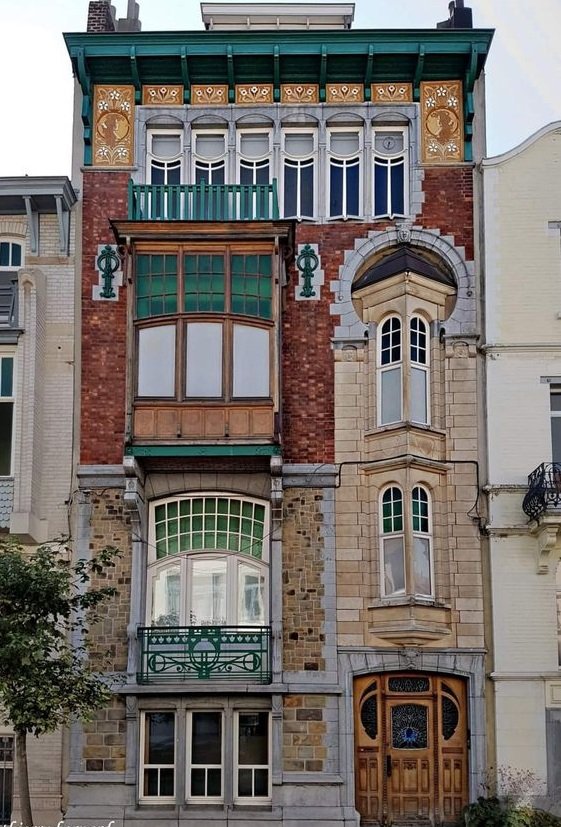#14379. Elegant Art Nouveau Façade: Material Mixture and Decorative Asymmetry

This is a magnificent example of Art Nouveau residential architecture, showcasing characteristic features of the Belgian architectural school from the early 20th century. The façade features an asymmetrical composition and a variety of materials, typical for this style. Here we see a skillful combination of red brick, stonework, and turquoise decorative elements, creating an expressive and harmonious image.
Particularly noteworthy are the ornamental elements in the upper part of the building with flowing, fluid forms and plant motifs characteristic of Art Nouveau. Bay windows and unique window frames with elegant glazing add volume and play of light to the façade. Note the distinctive feature of the style – the unusual shape of the main entrance with a decorative wooden door and stained-glass type window.
When designing a façade for a modern house, several techniques can be borrowed from this building: contrasting combination of materials, expressive architectural details, asymmetrical composition, and the use of decorative elements to create a unique character. Even with a minimalist approach, introducing select Art Nouveau elements can give a building individuality and artistic value.